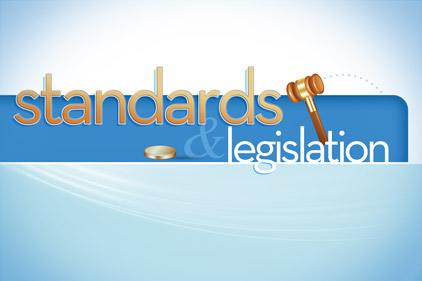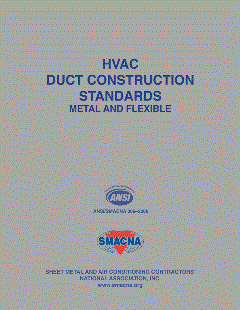Even greater savings are on the way. Updates to existing standards and new standards for other products that can be completed between now and 2015 could net consumers and businesses another $170 billion and reduce pollution even further. The study also reported that some of the products with the biggest potential additional energy savings include HVACR equipment such as water heaters, air handlers, and walk-in coolers and freezers.
The study by the American Council for an Energy-Efficient Economy (ACEEE) and the Appliance Standards Awareness Project (ASAP) found that existing standards will save 200 quads of energy by 2035, with another 42 quads of savings achievable with new standards. A “quad” is a measure of energy — the U.S. economy uses a total of about 100 quads per year.
“Improving the energy efficiency of everyday products with common-sense standards has proven to be one of the best ways to save consumers and businesses money while protecting the environment and avoiding the need to build expensive new power plants,” said Andrew deLaski, executive director of ASAP, a coalition of consumer, environmental, and efficiency groups. “Standards have been a bipartisan energy policy success story stretching across four decades and five presidencies.”
Existing energy-efficiency standards cover about 55 categories of products, ranging from major home appliances like refrigerators to commercial products such as motors and rooftop air conditioners. Initial standards for many of these products were signed into law by President Ronald Reagan in 1987. Since then, Congress and the Department of Energy have repeatedly added new products and updated standards. The study published examines what more can be done.
“Our research found that a combination of updates for existing standards and first-time standards for products like computers, TV set-top boxes, and street lights would add to the track record of big energy, economic, and environmental benefits achieved by standards,” said Amanda Lowenberger, lead report author and senior research analyst at ACEEE.
Present and Future Standards
According to the report, existing standards reduced U.S. electricity use by 7 percent in 2010. Annual electricity savings from existing standards will increase to 14 percent by 2035 as consumers and businesses purchase new products compliant with the latest standards. New and updated standards which can be completed by 2015 would reduce 2035 electricity use by another 7 percent.
Direct natural gas savings from existing standards will reach 950 trillion Btu by 2035, or enough to heat about one out of every three natural gas-heated homes. New and updated standards for gas products would add another 240 trillion Btu in annual gas savings by 2035. New standards would also deliver enormous water savings: more than 430 billion gallons annually by 2035 — enough to supply New York City.
“There’s no question standards have made a significant contribution to lowering home utility bills,” said Mel Hall-Crawford, energy projects director for the Consumer Federation of America. “And, there are more savings to be gained through future standards.”
According to the study, a typical household will save about $10,000 between 2010 and 2025 simply by purchasing products compliant with minimum standards. A typical household’s total electric bill over this period would be about 33 percent higher absent efficiency standards. Although efficient products typically cost more upfront, the report found that the cost of more efficient products pays back in lower utility bills within about three years, with net benefits outweighing costs by 4 to 1.
“Energy efficiency standards are beneficial on so many levels,” said David Goldstein, co-director of the Natural Resources Defense Council’s energy program. “They help our environment, they help drive innovation and — as this report shows — they help consumers save money with every appliance they plug into their wall sockets.”
According to the report, already existing standards reduced U.S. greenhouse gas emissions by about 200 million metric tons in 2010 and the annual reduction level will grow to 470 million metric tons by 2035, or roughly the output of 120 coal-fired power plants. New and updated standards would reduce 2035 greenhouse gas emissions by another 200 million metric tons, or another 50 coal-fired power plant equivalents.
To assess the potential impact of future standards, the report evaluated 34 products for which new or updated standards could be adopted within the next four years. Products with the biggest potential additional energy savings with cumulative quads through 2035 include:
1. Residential electric water heaters: 4.1 quads
2. Incandescent reflector lamps: 3.9 quads
3. Residential air handlers: 2.9 quads
4. Walk-in coolers and freezers: 2.4 quads
5. Distribution transformers: 2.3 quads
6. Outdoor light fixtures: 2.3 quads
7. Set-top boxes: 2.3 quads
8. Electric motors: 1.9 quads
9. Computers and monitors: 1.7 quads
10. Candelabra and intermediate base incandescent lamps: 1.3 quads
Other products that the study looked at showed potential cumulative quad savings through 2035 in the commercial/industrial sector are air-cooled air conditioners (1.1 quads); fans, blowers, and ventilation equipment (0.7 quads); commercial warm-air furnaces (0.1 quads); refrigeration equipment (1 quad); and unit heaters (1.2 quads) and in the residential sector, natural gas boilers (0.3 quads).
Other Findings
A key finding in the study about the relative savings of the evaluated standards is that “residential air handler standards would deliver the largest peak electric demand savings (about 12 GW in 2035) or roughly 18 percent of the total.” According to the report, “commercial air conditioners provide the second largest peak electric demand savings.”
Another of the report’s key findings is that “eight standards would achieve direct natural gas savings, with the largest potential gas savings deriving from commercial unit heaters.”
The study also looks at the effect for typical consumers and businesses, with “key assumptions concerning the impact of new standards on a product’s price (incremental cost) and the annual energy savings.” According to the report, “these variables are the basis for determining the cost effectiveness of new standards for typical purchasers.” The report also provides a benefit-cost (B/C) ratio and average simple payback period for each product.
Some of these findings in the report include:
• For residential air handlers, the incremental cost is $150, with an annual per-unit savings of $63.49 in electricity, a B/C ratio of 3.9, and 2.8-year payback period.
• Residential natural gas boilers have an incremental cost of $900, an annual per-unit savings of $145.17 in gas, a B/C ratio of 2.2, and 6.2-year payback period.
• Residential water heaters have an incremental cost of $814, an annual per-unit savings of $114.26 in electricity, a B/C ratio of 1.3, and 7.1-year payback period.
• In the commercial/industrial sector, automatic icemakers have an incremental cost of $70, and annual per-unit savings of $190.76 in electricity and $41.70 in water, a B/C ratio of 18.2, and a 0.3 year payback period.
• Air-cooled air conditioners in the commercial/industrial sector have a $1,212 incremental cost, an electricity annual per-unit savings of $205.22, a B/C ratio of 1.7, and a payback period of 5.9 years.
• Walk-in coolers and freezers have a $725 incremental cost, an electricity annual per-unit savings of $439.82, a B/C ratio of 4.5, and a payback period of 1.6 years.
• Fans, blowers, and ventilation equipment for commercial/industrial applications have a $1,410 incremental cost, a $966.32 annual per-unit savings for electricity, a B/C ratio of 4.5, and a payback period of 2.2 years.
• Unit heaters for commercial/industrial applications have a $2,640 incremental cost, a $262.26 annual per-unit savings for electricity, a B/C ratio of 1.2, and a payback period of 10.1 years.
According to the report, “For many products, the incremental cost to meet the potential standard level is very low or even zero. For other products, the incremental cost is significant. In all cases, however, the incremental cost is paid back through the savings well within the lifetime of the affected product. The potential standards for all the products are cost-effective, as indicated by a benefit/cost (B/C) ratio of 1 or higher.”
For more information, visit www.aceee.org.
Publication date: 6/25/2012




